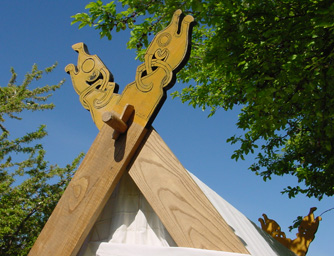
Here is another view of the front and back rake boards with their dragon head carvings. These have since been sanded an repainted with the same milk paint.

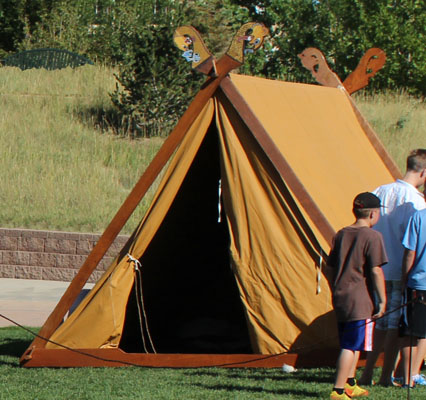 This is now my fourth Viking wedge tent frame, with modifications I personalized for my use.
This is now my fourth Viking wedge tent frame, with modifications I personalized for my use. This interpretation still uses traditional designs but does not represent a specific archeological tent. My previous tent, (Below, white canvas skin.) which I still use, tries to be closer to the original Oseberg Ship burial tent. I have seen that many reenactors want to include the same in their camps so when we come together, there are multiples of the same. Not exactly rubber stamps but too close in my view. So I took liberty to stylize this new frame slightly off from the original . I did try to stay true to the age.
The frame is made of European Beech an stained with 100% pine tar. The dragon head tops are still based on variants of the Oseberg finds but the carving details are more similar to other carving elements from the same archeological dig.
The wood was purchased as full "4 quarter" material. This had not been run through a planer and has a rougher feel. Though it is hand sanded, the wood retains a little more of a hand made appearance.
The tents footprint is approximately 11 X 14, which makes the ridge pole and eve poles almost 16' long, including their tenons.
The tent skin was made by Panther Primitives and I was able to get a very good price as Vikings Vinland made a bulk purchase for the sake of the membership. As the wood is imported, the frame was about double the cost of the canvas. Not seen is the removable canvas floor I also purchased from the same company. The floor liner is made with a special synthetic material sewn to standard canvas to act as a moisture barrier. When installed on the floor the synthetic moisture barrier is face down and the white canvas is up. As the floor is used, it my loose some of it's brightness, but the Khaki tent canvas makes the tent very dark. So the white floor helps defuse light. Use of the floor liner is optional and I only place it in the tent if we are doing overnight camping.
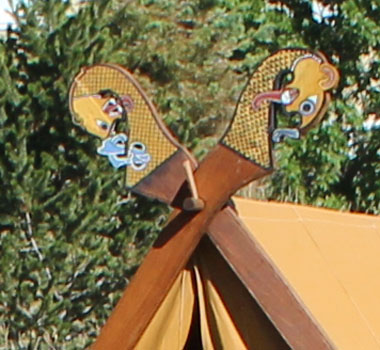
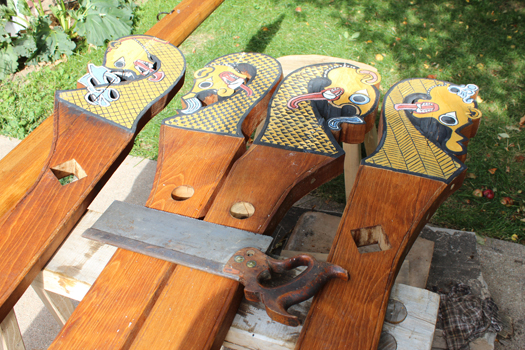
Here are close ups of the rake, or dragon head poles. The black patterns and lines are incised carvings. Working with the various Oseberg carvings it occurred to me that those areas I painted blue were representations of sea creatures spouting, like whales, though the dragons are more mythical than representative of real creatures. The paint is milk paint, made of lime, milk by-products and pigments. Milk paint is fairly good in resisting weathering.
The rake poles are held in place with a tapered wedge that passes through a mortise. In the picture on the right, I still needed to make adjustment so the wedge seats correctly. You will see the ridge pole details below.
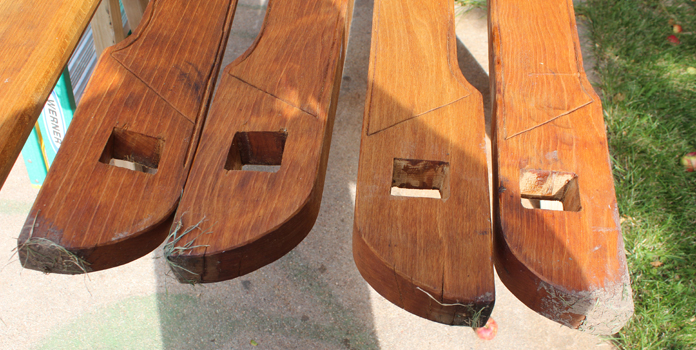
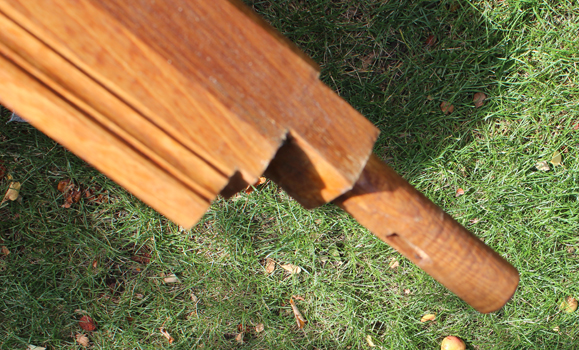
On the left, you see the end of the ridge pole. You see the stepped pattern of the square tenon that fits in the appropriate rake pole, then the round tenon that extends out of the final rake pole. The public does not see the square hole/tenon but it's purpose is so the ridge pole remains vertical while lifting the tent and throughout it's use. I have had the ridge pole of the tent below, lay over on it's side, loosing some of it's strength. As this tent is 14' long, I felt the ridge should be hefty enough to take snow loads.
On the right, is the bottom of the rake poles, again showing the square mortises placed to make the eve pole keep their position regardless of stresses or movement. The square mortises are not visible to the public as the Tents threshold covers them, that horizontal piece having a similar stepped square tenon finishing to a round tenon.
As for the threshold, refer back to the first photo at the top of this page.
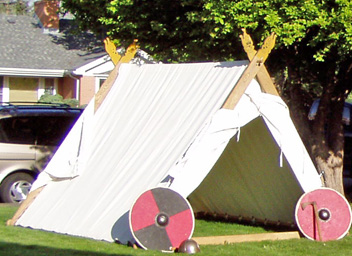
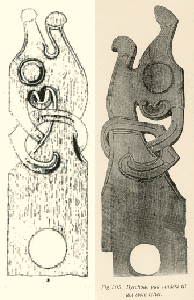
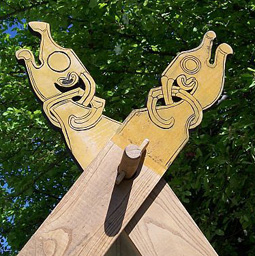
I made the new frame out of white ash. I took pictures of the Oseberg tent frame artifacts and blew them up to a size that would be appropriate for the wood I purchased. I then traced the designs on to the wood and used my wood carving chisels to incise the patterns into the wood.
Not shown, is this tent has a 10' X 10' canvas floor which can be loosely laid out inside, though often I use that same canvas sheet for shade independent of the tent. Only if I am camping does the floor remain a floor. Nice when things have multiple uses.
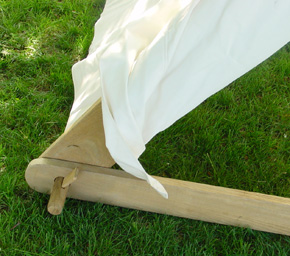
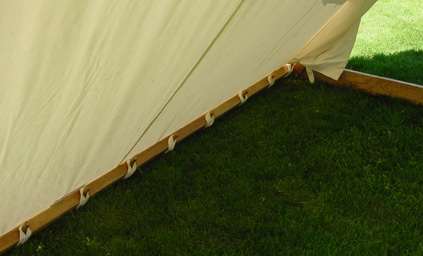
Left is the mortise and tenon wedges that hold the skirt boards, rakes and threshold boards in place. Then to the right you see the dowels that were inserted to secure the "skirt" edge loops.

Here is another view of the front and back rake boards with their dragon head carvings. These have since been sanded an repainted with the same milk paint.
The tent frame was finished with linseed oil to preserve the wood and make it more weather proof. Also, as the tent had weathered a bit, it now has a coat of pine Tar and has a darker appearance. The tent and it's frame has proven to be reliable and a very serviceable.